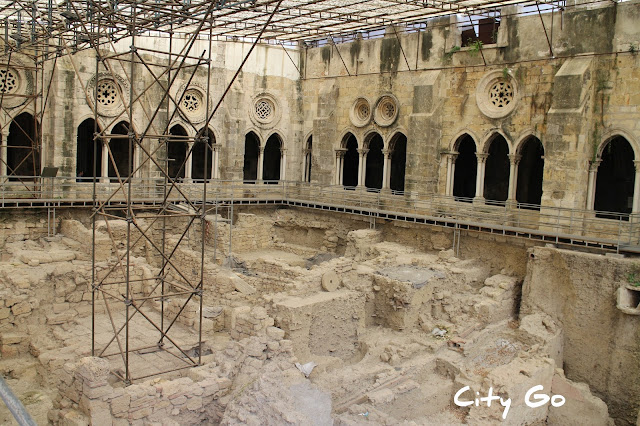Heraklion, Greece
Heraklion is the capital of the island of Crete and is at the heart of the region where the Minoan civilization once flourished. South of Heraklion stands the Palace of Knossos and the city might have served as a harbour for the Palace. Knossos was badly damaged by an earthquake around 1600 BC but was inhabited until 1100 BC, when it was converted into a sacred place. The town of Knossos continued to exist until the Arab raids.


As Knossos faded Heraklion became a more important town. As a harbour, it kept in contact with other Greek cities during the Classical Period, sometimes even forming short-lived alliances. It was integrated into the Roman Empire in 67 BC enjoying the prosperity brought by the Pax Romana. At this time the city was known as Heracleum, the port of Heracles.
As the Roman Empire was split into two, Crete became part of the Byzantine Empire. Starting in the 7th century AD there were several raids from pirates, mainly Arab, which at one point settled in Heraklion, officially founding it as a city. It was only in the 10th century that the Byzantine Empire regained control, setting the capital in Heraklion, then known as Candia.

In the 11th century, the Byzantine Empire granted trade privileges to the Venetians, who became increasingly interested in the geographical position and resources of Crete. Taking advantage of the chaos brought to the Byzantine Empire by the Second Crusade the Venetians occupied the island. Candia kept its capital status and during this period prospered significantly as the urban population increased, bringing along artists and artisans. Many important structures were built during this period such as fountains, the town hall, the defensive walls, the Koules fortress and the old harbour.

However, the city was badly damaged and abandoned by the population following the war with the Ottoman Empire, which in 1669 took control over the island. During Ottoman rule, the city was gradually recovered and many churches were converted into mosques. In the 19th century, as uprisings for independence became more frequent, the seat of Ottoman administration was moved to Chania. With the support of the British, the French and the Russians, seeking to weaken the Ottoman Empire, Crete was granted extended autonomy in 1897 and in 1913 was united with Greece. Candia recovered the ancient name of Heraklion.

In the 11th century, the Byzantine Empire granted trade privileges to the Venetians, who became increasingly interested in the geographical position and resources of Crete. Taking advantage of the chaos brought to the Byzantine Empire by the Second Crusade the Venetians occupied the island. Candia kept its capital status and during this period prospered significantly as the urban population increased, bringing along artists and artisans. Many important structures were built during this period such as fountains, the town hall, the defensive walls, the Koules fortress and the old harbour.

However, the city was badly damaged and abandoned by the population following the war with the Ottoman Empire, which in 1669 took control over the island. During Ottoman rule, the city was gradually recovered and many churches were converted into mosques. In the 19th century, as uprisings for independence became more frequent, the seat of Ottoman administration was moved to Chania. With the support of the British, the French and the Russians, seeking to weaken the Ottoman Empire, Crete was granted extended autonomy in 1897 and in 1913 was united with Greece. Candia recovered the ancient name of Heraklion.
Heraklion was once again put to test during the Battle of Crete in 1941, which brought great destruction. The island was occupied by the German-Italian forces for three years, until it was liberated in October 1944.
It regained its capital status in 1971. Famous people from Heraklion include the painter El Greco and the writer Nikos Kazantzakis, after whom the airport is named.
More Heraklion:
Bembo Fountain and Turkish Sebil
City Hall
Historical Museum of Crete
Knossos
Koules Fortress
Market Street
Monastery of Saint Peter and Saint Paul
Morosini Lions' Fountain
Museum of Christian Art
Saint George Gate
Saint Minas Cathedral
Venetian Shipyards






Comments
Post a Comment